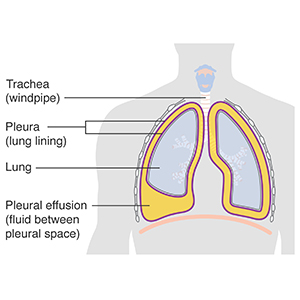Role of CRP as a marker for discrimination of exudative and transudative pleural effusion

Submitted: August 27, 2021
Accepted: March 10, 2022
Published: March 14, 2022
Accepted: March 10, 2022
Abstract Views: 1492
PDF: 518
Publisher's note
All claims expressed in this article are solely those of the authors and do not necessarily represent those of their affiliated organizations, or those of the publisher, the editors and the reviewers. Any product that may be evaluated in this article or claim that may be made by its manufacturer is not guaranteed or endorsed by the publisher.
All claims expressed in this article are solely those of the authors and do not necessarily represent those of their affiliated organizations, or those of the publisher, the editors and the reviewers. Any product that may be evaluated in this article or claim that may be made by its manufacturer is not guaranteed or endorsed by the publisher.
Similar Articles
- Cuneyt Tetikkurt, Bahar Kubat, Cigdem Kulahci, Seza Tetikkurt, Buket Caliskaner Ozturk, Assessment score for the diagnosis of a case with pleuroparenchymal fibroelastosis , Monaldi Archives for Chest Disease: Vol. 91 No. 3 (2021)
- Syed Muhammad Zubair, Muhammad Waleed Chaudhry, Ali Bin Sarwar Zubairi, Talha Shahzad, Aqusa Zahid, Ibrahim Ali Khan, Javaid Ahmed Khan, Muhammad Irfan, The effect of ivermectin on non-severe and severe COVID-19 disease and gender-based difference of its effectiveness , Monaldi Archives for Chest Disease: Vol. 92 No. 4 (2022)
- Nikhil Rajvanshi, Prawin Kumar, Jagdish Prasad Goyal, Utility of systemic immune-inflammation index as a serum biomarker to differentiate between complicated and simple para-pneumonic effusion , Monaldi Archives for Chest Disease: Vol. 94 No. 3 (2024)
- Stavros Anevlavis, Georgia Karpathiou, Paschalis Ntolios, Marios E. Froudarakis, Two years progression-free survival under vinorelbine metronomic therapy of a patient with metastatic epithelioid hemangioendothelioma , Monaldi Archives for Chest Disease: Vol. 92 No. 4 (2022)
- Zhi Xia, Xueyao Rong, Qiong Chen, Min Fang, Jian Xiao, A nomogram to predict lung cancer in pulmonary lesions for tuberculosis infection patients , Monaldi Archives for Chest Disease: Early Access
- Matteo Daverio, Mariaenrica Tine', Paolo Spagnolo, The milky way , Monaldi Archives for Chest Disease: Vol. 91 No. 4 (2021)
- Despoina Moumtzi, Marianna Kakoura, Pulmonary embolism in Behcet's disease: a case report , Monaldi Archives for Chest Disease: Vol. 90 No. 4 (2020)
- Shivam Garg, Vishnukanth Govindaraj, Dharm Prakash Dwivedi, Kalayarasan Raja, Elamurugan Palanivel Theerthar, Postoperative pulmonary complications in patients undergoing upper abdominal surgery: risk factors and predictive models , Monaldi Archives for Chest Disease: Early Access
- Manuel Monti, Management of severe Falciparum malaria on a mission: A case report , Monaldi Archives for Chest Disease: Vol. 89 No. 1 (2019)
- Federico Piffer, Guido Levi, Giampietro Marchetti, Chiara Barbieri, Immune reconstitution inflammatory syndrome in tuberculous pleurisy and ulcerative colitis: a case report , Monaldi Archives for Chest Disease: Vol. 89 No. 3 (2019)
You may also start an advanced similarity search for this article.

 https://doi.org/10.4081/monaldi.2022.2059
https://doi.org/10.4081/monaldi.2022.2059





